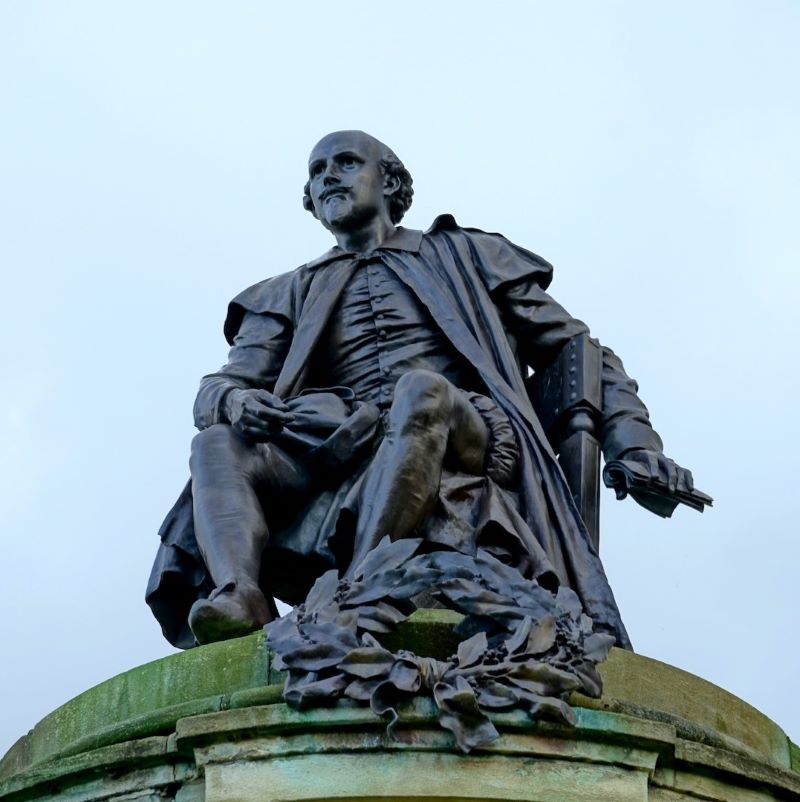by Carolyn Thomas.
Every year thousands of people travel to places associated with the authors they love. The link can be that it’s the place where a writer was born, lived, died, or set their novels. But does seeing a writing desk or following the route taken by a fictional character really bring us closer to the writers we love?
All was revealed at this month’s lecture from the Southampton Arts Society, ‘Writers and Relics: A Brief History of Literary Tourism’ where local expert Annalie Talent shared her knowledge and experience of several writers and their works.
As well as being a very engaging and knowledgeable speaker – she even does the appropriate accents as she quotes relevant information – Annalie has several links to Hampshire. She’s a former pupil of Thornden School in Chandlers Ford and during a career spent teaching and running education programmes in literary houses across the UK, spent time working at Jane Austen’s House Museum in Chawton. So she was perfectly placed to conduct her audience on a ‘literary pilgrimage’ around, the UK, from their comfortable seats at the Thornden Theatre.
Her ‘tour’ began with Shakespeare, but not in his now celebrated birth town of Stratford. As she explained, the first literary location related to England’s national bard was in fact a folly, called a ‘Temple to Shakespeare’, which the famous 18th century actor/producer David Garrick had built in the grounds of his splendid London home.
Garrick performed Shakespearian roles to great acclaim in the mid-1700s and was keen to foster an association with the playwright. So he built the folly to show off his vast collection of relevant relics, which included a chair made from wood from a mulberry tree supposedly planted by Shakespeare, a glove, a dagger, a ring and a salt cellar.
When he heard about the opening of Stratford’s town hall he saw it as a great opportunity for him to make another link between himself and Shakespeare. So he donated a statue for the hall and organised a ‘jubilee’ to celebrate the occasion. The three day event, planned to include an oratorio, a ball and fireworks, was sadly a complete washout – literally, as rain poured down, making it an expensive fiasco, or ‘the Millennium Dome of its day’ as Annalie described it. But nevertheless the Jubilee did go a long way towards cementing the link between Shakespeare and his place of birth, which has flourished ever since.
Similarly Scotland needed a location for remembrance of its bard, poet and lyricist Robert Burns. The cottage in Alloway where Burns was born in 1759 became a popular literary destination after his death, by which time it was a pub. Fans of his work would engrave their signatures into on the walls and furniture – no such behaviour allowed now that the building is the Burns Cottage Museum!
Indeed these early ‘literary pilgrims’ would generally show little reverence towards the places they were visiting, being apt to just turn up and knock on the door of a house they believed to be linked to their favourite writer.
They would also help themselves to whichever ‘souvenirs’ they fancied. A beautiful Yew tree next to the grave of William Wordsworth became entirely lop-sided as visitor after visitor snipped off a sprig to take home with them. And at the Bronte’s parsonage in Haworth even the lower sash from Charlotte’s bedroom window was found to be missing, suspected stolen by a literary relic hunter.
Of course these days the houses and haunts of our favourite authors are guarded more closely. Even so there are still occasions when visitors overstep the mark. Annalie discussed the ‘Austen effect’ which drives her ardent fans to extraordinary lengths to somehow connect with the author. Staff at Jane Austen’s House Museum in Chawton, who welcome 40,000 visitors a year, once fielded a request to hold a séance at the property. Then in 2009 piles of human ashes were discovered scattered around the novelist’s home and gardens, presumably by well-meaning types intending to fulfil their relative’s dying wishes.
Since its unsophisticated and unregulated beginnings in the 1700s, literary tourism is still big business today. People travel to the UK from the world over to look for Wordsworth’s daffodils by Ullswater Lake, to take in the ‘romance of a house’ which is Walter Scott’s Scottish baronial-style Abbotsford, and to peek into the parsonage during an exploration of ‘Bronte Country’, where even the fingerposts on the stunning landscape of the Yorkshire moors are written in English and Japanese.
So what keeps tourists flocking to the areas which fired the imaginations of their favourite writers? Maybe people believe that close communion with authors and their homes and haunts will further their understanding of their novels. Or, as novelist Barbara Pym wrote in 1969 after visiting Jane Austen’s house and touching her desk, ‘Oh that some of her genius might rub off on me’.
But as Annalie put it, literary tourists should remember that an authors’ home or possessions won’t last forever, but their work will. ‘By all means visit’, she finished, ‘But remember a writer’s words offer us the clearest and most authentic view of their literary genius.’
- The Arts Society is a leading international charity with over 90,000 members supporting the arts of yesterday, today and tomorrow. The Southampton branch meets monthly for lectures from all sorts of arts specialists, including some with a literary angle, which are free for full-time students and under-25s, £8 for visitors. For more information email info@theartssocietysouthampton.org.uk
- In Common is not for profit. We rely on donations from readers to keep the site running. Could you help to support us for as little as 25p a week? Please help us to carry on offering independent grass roots media. Visit: https://www.patreon.com/incommonsoton

